
Timber Harvesting: Its Methods, Stages & Implementation
Timber harvesting is a forest management practice that requires careful planning and strict adherence to the chosen methods. Otherwise, it can bring significant economic losses to forestry and harm the environment. In this article, you will learn about the leading causes, techniques, and timber harvesting stages and how such satellite technologies as the EOSDA LandViewer software can significantly improve timber harvest management and the entire forestry.
Reasons For Timber Harvesting
Forestry requires the right approach to the care and restoration of trees. In particular, excessive methods of harvesting timber can lead to catastrophic consequences for agriculture and the environment. At the same time, if the state of the forest is not controlled, the effects can also be highly damaging. Here are some reasons for timber harvesting.
Reaching Trees Maximum Product Value
When mature trees have reached their total weight, their growth, health only decrease. That is why the most significant income is provided by selling wood from mature trees. At the same time, old forests with dead trees are habitats for many wild animals, including spotted woodpeckers, owls, flying squirrels, and raccoons. Therefore, part of the forest must be left during logging.
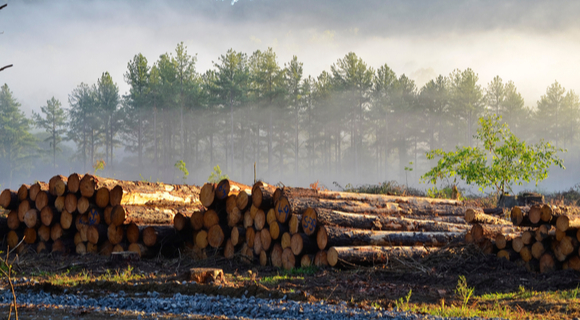
Improving Forest Value And Health
Removal of diseased and old plants contributes to crop trees’ growth and increases their value. Using crop tree release (CTR), we can raise the productivity of individual plants and improve the habitat of wild animals. Therefore, foresters often release species that bears, deer, grouse squirrels, and others use for food when harvesting timber.
Despite the apparent benefits, excessive timber harvesting is harmful. If there are not enough plants to cover the area, growth per acre will decrease. Moreover, the quality of many trees grown outdoors is deteriorating. Therefore, foresters maintain planting density optimal for particular species and age plants.
Creating A Fire-Resistant Forest
Although any forest is vulnerable to fire, some methods of timber harvesting can significantly reduce this disaster or its consequences risk. One of the most common ways is to increase the distance between tree crowns using harvesting timber. It is more difficult for fires to spread if they are located farther apart, even with strong winds. Also, when choosing plants for logging large fire-resistant trees should be left intact.
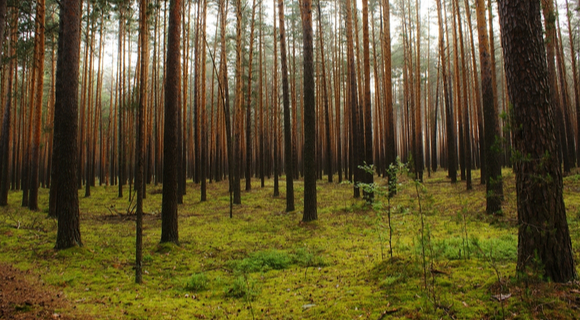
Encouraging Regeneration Of Desired Species
For trees to grow intensively, it is necessary to encourage their regeneration. So, foresters need to create the conditions required for a particular type during logging. For example, paper birch and aspen need abundant sunlight. Others, such as beech and red spruce, need partial shade. The third, so-called tolerant, plant species develop well in both conditions.
Regeneration cutting accelerates a different species’ growth. So, timber harvesting with clear-cutting is suitable for stimulating paper birch or cherry. The elimination of competing seedlings and shrubs can help other species. At the same time, it is necessary to control trees’ conditions for regeneration to be successful. For example, it is best not to do any operations if the plants cannot produce the required seeds for recovery.
Timber Harvesting Methods: Choose The Best To Meet Your Purpose
Different methods of timber harvesting depend on the tasks. Here are the main ones.
Clear-Cutting
This technique involves all plants’ removal in an area. Thus, foresters imitate natural disaster results, the biological “mechanisms” of this process. This method is most effective on species that need full sunlight : maple, cedar pine, eucalyptus, and paper birch.
It is not entirely true. In fact, despite the benefits described above, today, clear-cutting is considered a less preferred timber harvesting method for economic and environmental reasons.
Shelterwood
The essence of this timber harvesting approach is the removal of mature trees for several collections within 10-15 years. It creates shelter for shade-tolerant seedlings like red spruce and food sources for wildlife. Shelterwood is best suited for plantings from predominantly mature trees.
Seed Tree
According to this method, foresters leave more than five trees on the cut area remotely from each other. They provide seeds for natural reforestation, and in the future, they can serve as a woodpecker habitat. To harvest timber this way, the most suitable are plants with high growth rates, sowing capacity, and wind resistance.
Group Selection
This timber harvesting method is small-scale clear-cutting when a stand is cut down over 40-50 years by groups of trees. A cut-down area depends on a grown plant type: openings of less than one-quarter of an acre are suitable for shade-tolerant trees and larger spaces for sun-loving trees. As a part of selective logging, this way to harvest timber is used to gather high-quality logs and is one of the most expensive methods.
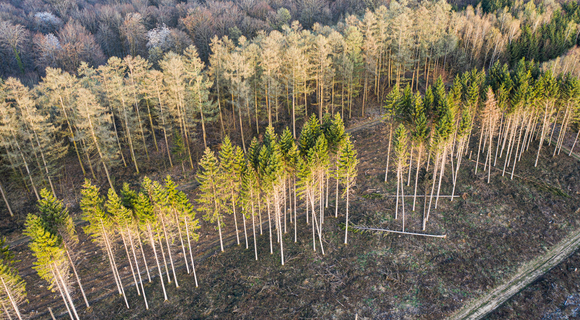
Single-Tree Selection
This approach is the most intensive among major methods of timber harvesting. It involves the removal of individual mature, low-quality, or competing trees. Among the advantages is constant wood production. However, this way to harvest timber avoids damaging the remaining plants — best for small areas with shade-tolerant species. For sun-loving trees, you should choose a different way.
Process Of Timber Harvesting
Regardless of chosen ways to harvest timber, there are usually three stages: preparation, operations, and post-harvesting. Let’s consider each of them.
Preparation
There can be different goals to harvest timber: prevention of tree diseases, habitat improvement, recreation, and financial income. However, regardless of this, the preparation stage includes:
- creation of high-precision topographic maps indicating the location of the most important natural and artificial objects (roads, bridges, crossing streams, and ecologically vulnerable areas);
- forest inventory to assess potential harvesting timber volumes and obtain information on species composition and the most profitable commercial areas;
- stock mapping and tree tagging to locate desired plants and audit to meet market needs;
- planning for stream crossings and new roads to reduce costs and increase productivity;
- defining no-go areas to conserve biodiversity and secure timber harvesting operations and the definition of buffer zones for the conservation of the environment and cultural sites.
Carrying out these preparatory activities allows you to optimize resources and organize further stages most efficiently.
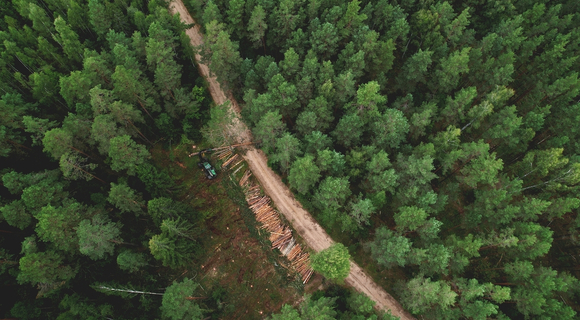
Timber Harvesting Operations
The process itself begins with the selection of suitable machinery. It allows you to achieve your goals faster and minimize environmental damage. The complex of logging equipment includes machines for felling trees and their further transportation . The final choice of machinery depends on the timber harvesting technique.
The next step is the construction and maintenance of roads and log stairwells. These activities affect financial costs, work efficiency, and the environment’s state. Next, it is necessary to determine the timing of timber harvesting operations, organize the hauling of logs with minimal impact on soil, and, if necessary, instruct personnel. Another essential operation is the directional felling of trees. It avoids damage to remaining plants, keeps workers safe, and facilitates warehousing.
Post-Harvesting
After carrying out all timber harvesting operations, it is necessary to implement some measures to eliminate the production consequences:
- closure of roads and skid trails for ground stabilization and water movement;
- drainage of wharves and quarries, as well as, if necessary, restoration of vegetation;
- camp cleaning;
- drawing up a report with a post-harvest inventory and analysis of forest state.
The forest owner or its manager usually carries out forest management activities.

Sustainable Timber Harvesting: A Long Term Perspective
Sustainable timber harvesting methods contribute not only to tree regeneration but also to the long-term health of the forest. They involve keeping the best trees until young and healthy plants grow or destroying all vegetation to eliminate competition for new shoots.
This timber harvesting type often contrasts with the so-called “commercial clear-cutting” , leaving a few little trees. Unfortunately, most often, such plants are slow-growing and weak. It adversely affects the health of their offspring: it becomes more vulnerable to diseases and pests. Together with other human activities that harm the ecosystem, such as palm oil deforestation, this approach can have catastrophic consequences.
How EOSDA LandViewer Can Assist Timber Harvesting
Forest state analysis, determining a timber harvesting plan, requires significant efforts from the forest- and landowners and the companies engaged in its felling. The EOSDA LandViewer software allows you to optimize forestry operations and reduce economic and environmental risks.
Monitoring Of Unauthorized Cuttings
This problem causes severe losses for forest owners. They can be state, utility, or private individuals. Unauthorized timber harvesting is often accompanied by significant damage to the ecosystem, as environmental problems are entirely ignored. EOSDA LandViewer helps to observe woodlands constantly and with the help of Change Detection technology operatives of the forest area where unauthorized loggins took place. It does not require any field trips and helps save resources and time.
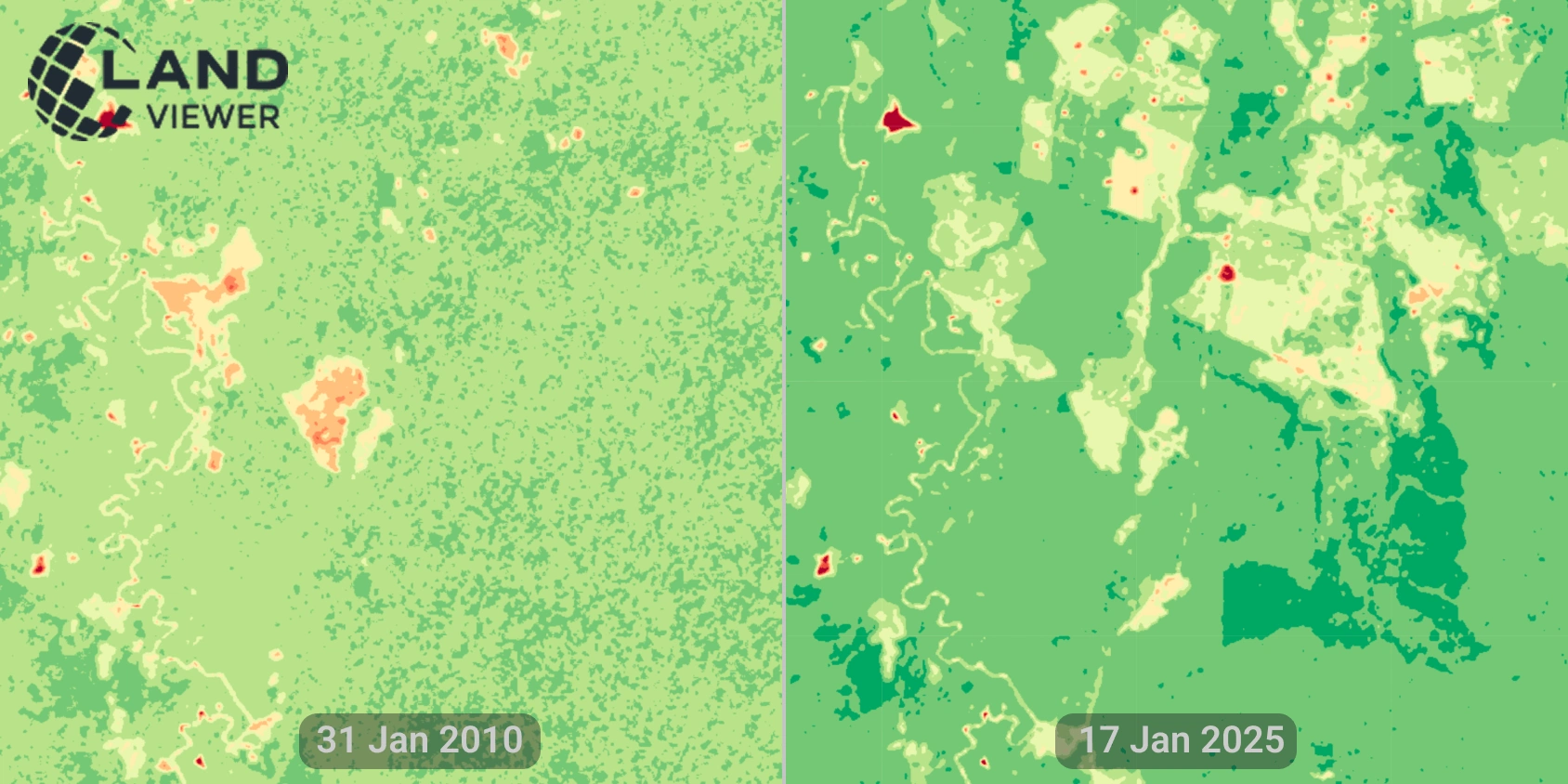
Timber Harvesting Quality Monitoring
When agreeing on forest logging, forest owners always delineate the area set aside for timber harvesting. Sometimes, there are buffer zones for cutting down if a decided timber amount has not been reached in the designated location or if part of the area was in a hard-to-reach place. Also, a forest owner can delineate areas in which felling can never be carried out. Since forest areas are usually huge, monitoring whether a timber harvesting contractor complied with territorial restrictions is challenging. EOSDA LandViewer is a nifty tool to track the cut areas and compare them with pre-agreed ones.
Reporting Without Field Trips
Contractors have to report how much wood and what area they cut down. EOSDA LandViewer allows them to delineate the felled areas and show them in the report. In this way, contractors offer an area location and confirm that operations only occurred in the agreed areas.
Thus, remote sensing, particularly satellite technology, plays an increasingly important role in various industries. Since forestry is no exception, satellite EOSDA LandViewer software allows you to solve the necessary tasks effectively, including timber harvesting. Its broad functionality contributes to sustainable forestry management and the entire industry.
About the author:
Petro Kogut has a PhD in Physics and Mathematics and is the author of multiple scientific publications. He is the Soros Associated Professor as well as the head of the department of differential equations in the Oles Honchar Dnipro National University and has received a number of grants, prizes, honorary decorations, medals, and other awards. Prof. Dr. Petro Kogut is a science advisor for EOSDA.
Recent articles

Analyze 2025 & Plan Your Best Year Yet: LandViewer Christmas Offer
It’s the most wonderful time of the year! The Christmas holidays are here, and so is your chance to analyze 2025 and plan a prosperous 2026 with more affordable Pro plans in LandViewer.

EOSDA Models Climate Change Impact On Sugarcane Yields
EOSDA modeled future temperature, rainfall, and other climate impacts on Veracruz sugarcane. The results help growers plan long-term adaptation strategies, including timing, varieties, and irrigation.

EOSDA LandViewer Black Friday Sale: Exclusive Offers & Giveaway
This Black Friday, LandViewer offers new users the chance to save on monthly plans, get extra months with yearly subscriptions, and participate in a free annual plan giveaway.

